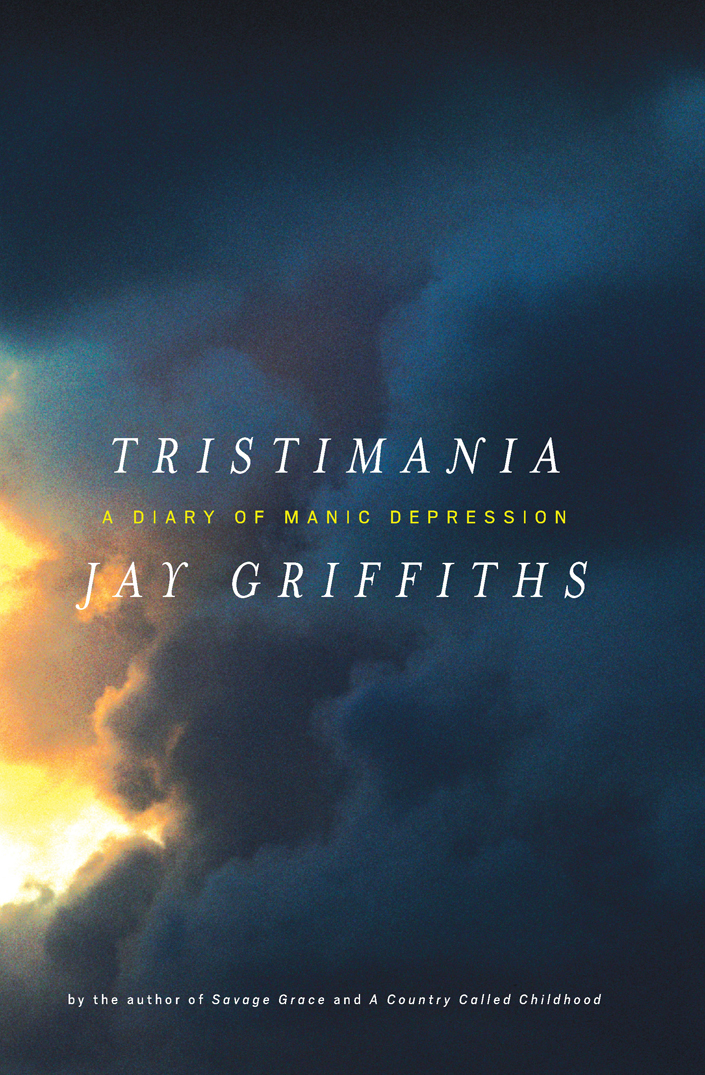
Tristimania
کتاب های مرتبط
- اطلاعات
- نقد و بررسی
- دیدگاه کاربران
نقد و بررسی

April 1, 2016
A visceral account of the turmoil experienced within a manic-depressive breakdown. Griffiths (A Country Called Childhood: Children and the Exuberant World, 2014, etc.) is a dedicated recorder of her experiences. "My notebooks have always been very precious to me," she writes, "and I travel with them wrapped, waterproofed, closer to me than my passport or money. They are footprints of my thoughts, tracks of journeys, curiosity-paths and desire-lines." What she writes in these notebooks eventually becomes stories, essays, and books, but the notebooks have also provided her with a space to try and make sense of her own mind. Griffiths, a winner of the Barnes & Noble Discover Award, has bipolar disorder and can be susceptible to periods of mania and depression, the risk of both being heightened by exhaustion and stress. In this book, the author explores the period of time after a lengthy book project left her depleted. She was aware of being at risk of a mental break but far enough into it by the point of realization that treatment became exceedingly difficult. However, she was determined to capture as much of it as possible: the "honey on the razor's edge" of being able (or unable) to see things in new ways, hear music differently, ride the rapids of a torrent of ideas and thoughts. Griffiths is a skilled writer who ably harnesses this flood of emotions and thoughts, and her descriptions of the mania and depression are never unwieldy. There were countless times when she could have stopped writing, but Griffiths saw it through, exploring all the places her mind traveled: Greek and Roman views of mental health, the roles of friends and pets, the failings and lifelines of psychotherapy. Eventually, in order to get out of her own head and "see far horizons again," she set out on the 800-kilometer Camino de Santiago in Spain. Fortunately for everyone who has been affected by bipolar disorder, Griffiths--and her notebooks--survived the journey.
COPYRIGHT(2016) Kirkus Reviews, ALL RIGHTS RESERVED.

June 15, 2016
Griffiths (Savage Grace) illustrates bipolar disorder through both her own experience and her study of literature, exploring manic depression in Shakespearean dramas and Roman mythology. She also traces the etymology of disorder terms, including tristimania, first coined in the 1700s and derived from Latin ("tristis") and Greek. At one point, a friend asks her why she wants to write about such a tumultuous time in her life. Griffiths wishes not only to show the condition's survivability but also to share its "honey on the razor's edge." For the author, bipolar disorder almost embodies a spiritual dimension and cannot be reduced to only a mood disorder. During a particular episode, Griffiths felt her perception of artworks, song, and poetry shift, and while she believes it is important to tell her story, she reminds readers of the commonalities that thread all with manic depression together. Her literary background is evident, and the book nicely documents the history of manic depression no matter its name, reading as much like a textbook as a memoir. VERDICT Because of its heavy devotion to exploring bipolar disorder in fiction, this work will best serve a select crowd with a love of classic literary works.--Jennifer M. Schlau, Elgin Community Coll., IL
Copyright 2016 Library Journal, LLC Used with permission.

May 15, 2016
Tristimania, an archaic term meaning melancholy, is an interesting choice for this poetic, literate exploration into manic depression. Award-winning writer Griffiths (A Country Called Childhood, 2014) suffered from depression for years until an extended bout triggered by a running accident inspired her to record her painful slide in and out of the rabbit hole. She is unflinchingly honest as she recounts her dark, suicidal thoughts, hoping to explain the unexplainable to readers who haven't experienced the illness firsthand. She cites a number of literary instances of the condition, particularly in Shakespeare, and suggests that the visions of shamans and mystics could well be manic hallucinations. As for treatment, Griffith stresses the importance of listening to sufferers' descriptions and confirming their metaphors. In an attempt to cure herself, she sets off on a solo, month-long pilgrimage, walking the legendary Camino trail across Spain without companions or medication. Her journey is painful but ultimately successful. Griffiths offers readers a deep submergence in rich, creative language, including a closing series of poems, and fascinating insights into this profound and mysterious disease.(Reprinted with permission of Booklist, copyright 2016, American Library Association.)

























دیدگاه کاربران